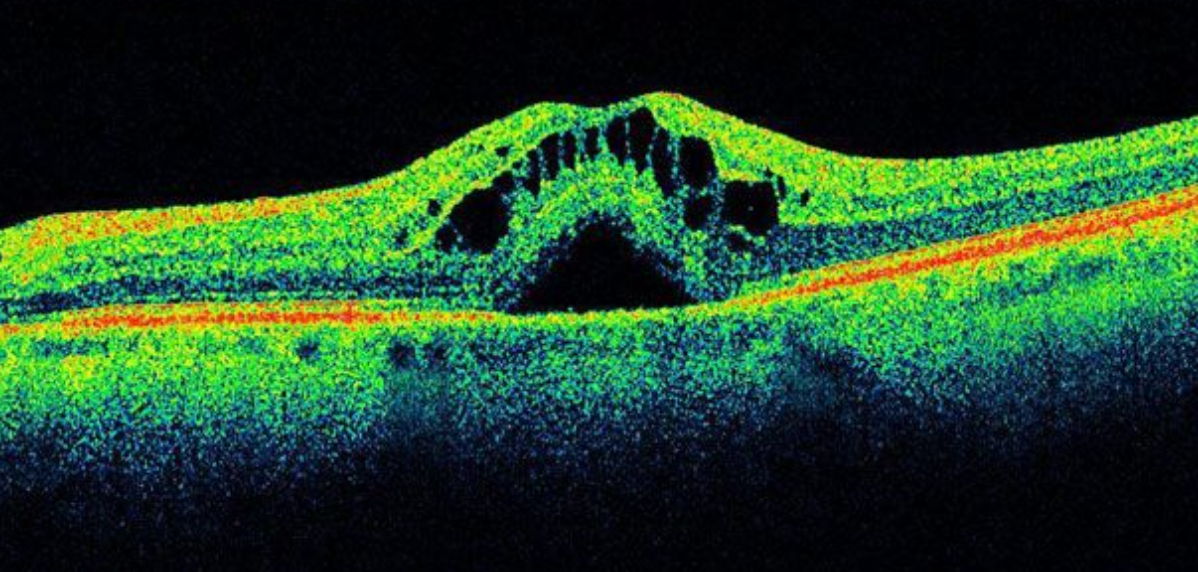Article
New imaging modalities offering bold, noninvasive, real-time monitoring of retinal diseases
Author(s):
ASRS 2020 coverage: The Audacious Goals Initiative of the National Eye Institute is focused on developing noninvasive imaging advances to help patients with vision loss.

See the latest coverage from ASRS 2020 here.
The National Eye Institute (NEI) Audacious Goals Initiative (AGI) is in a word, audacious.
Launched in 2012, the stated challenge of the project is to develop “big, bold ideas to stimulate innovation for a national vision research agenda, the ultimate goal of which is regenerating neurons and their neural connections in the eye and visual system with the specific targets being the photoreceptor cells and retinal ganglion cells,” according to Steven Becker, director of the Office of Regenerative Medicine, National Eye Institute, National Institutes of Health.
The first consortium of three funding consortia funded by the AGI is beginning to bear fruit. “[The projects] hold promise not only for advancing regenerative medicine but help in the treatment of many retinal diseases,” Becker said.
Five projects were funded in 2015 for a total of $18 million.
In addition to developing new higher resolution capabilities, this first consortium has the objectives of developing techniques and tools to noninvasively assess function, allow for longitudinal imaging of specific cell types, and improv the analysis of the obtained data, he explained.
A noteworthy imaging project
“Platform technologies for microscopic retinal imaging: development and translation” is the project of Alfredo Dubra, PhD, and his team at Stanford University, who are developing several technologies that can increase image translation and improve eye tracking.
In collaboration with Jessica Morgan, PhD, at the University of Pennsylvania, the investigators are working to develop an optophysiological method to assess photoreceptor function in order to provide sensitive biomarker the assessing the function of regenerated or restored cells.
This project provides an example of how these imaging technologies can ultimately impact patients, Becker explained.
According to Becker, biomarkers that can be assessed noninvasively are needed to determine if photoreceptors are functioning.
“These investigators showed by using reflectance microscopy that individual cones can be distinguished and that the reflectance varies over time,” he said. “By using an ophthalmoscope with adaptive optics [AO], Drs. Dubra and Morgan have characterized the cone reflectance changes in response to the wavelength and intensity of a visible stimulus and matches the spectral sensitivity of cone-mediated vision. This then could be used to measure photoreceptor function and serve as a biomarker for assessing if photoreceptors have regained function after an intervention.”
Morgan currently is engaged in a clinical study of patients with choroideremia undergoing gene therapy and using their technique to assess stimulus-evoked cone-reflectance responses.
Dubra also is working toward using AO to improve image quality but ocular movements require algorithms to correct image distortion.
Becker explained that improved real-time eye tracking and better, faster software algorithms would allow patients with nystagmus to be assessed with AO.
“He has already demonstrated that pupillary and retinal position can be calculated simultaneously,” Becker added. He pointed out that the key to this is faster processing of images as they are downloaded from the camera. The system can work in the presence of partial pupillary obstruction and with different eye types and be added to any ophthalmoscope.
Other ongoing AGI projects
“Two-photon ophthalmoscope for human retinal imaging and functional testing” is the focus of Krzysztof Palczewski, PhD, and colleagues at the University of California-Irvine. The project is developing an ophthalmoscope with the goal of imaging endogenous retinal fluorophores to monitor the visual cycle.
The project, titled “Interferometric Optophysiology of the Human Retina,” led by Austin Roorda, PhD, from the University of California-Berkeley, is focused on wide-field interferometry and optimizing other imaging methods that can increase the speed and sensitivity of retinal imaging.
“Imaging Optic Nerve Function and Pathology: From Mouse to Human” is dedicated to improving functional magnetic resonance imaging of the optic nerve and new methods and algorithms to facilitate a better understanding of the progression of glaucoma and other optic neuropathies. The project is led by Sheng-Kwei Song, PhD, from Washington University.
“Accelerating Vision Restoration with In Vivo Cellular Imaging of Retinal Function,” run by David Williams and at the University of Rochester and countrywide associates, is developing various imaging techniques with calcium indicators, glucose sensors, and labelled photoreceptor precursors in mice and non-human primates.
“These improved imaging technologies will give clinicians new tools to better assess disease progression and the effects of various treatments,” Becker concluded. “The development of these imaging advances could allow the development of important new functional outcomes measures for clinical trials and accelerate therapies for patients.”
Dr. Becker has no financial interest in this subject matter.
Newsletter
Don’t miss out—get Ophthalmology Times updates on the latest clinical advancements and expert interviews, straight to your inbox.





